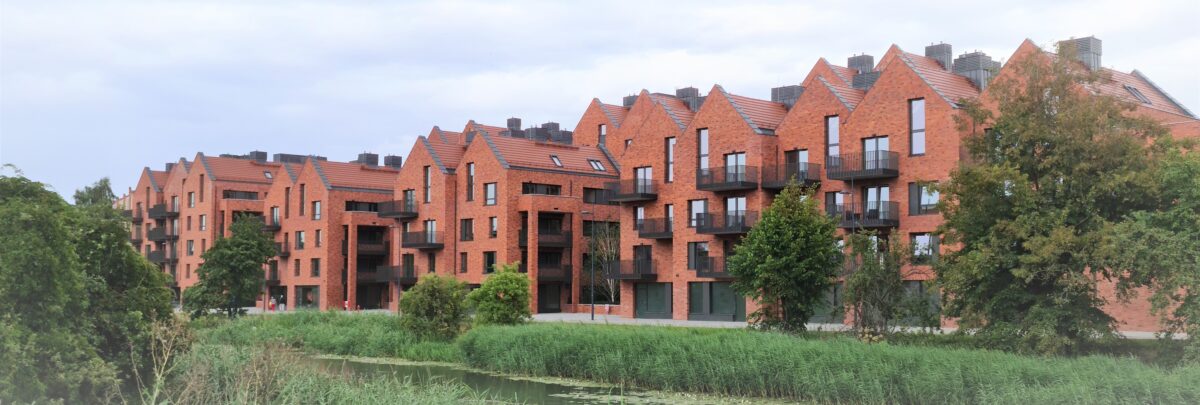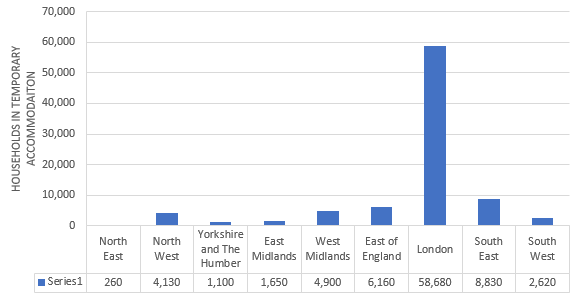Supply is one of the key problems in the UK housing market. Sadly, the latest in-vogue argument is that the perceived housing supply shortage is a misconception. This track of thought has permeated right across the political spectrum. But do these claims hold weight?
Both centrists and the left have bought into the housing supply shortage myth. It is wrong to do so.
Last year the Labour Party produced its ‘Land For The Many’ report. In it all housings ills were laid at the feet of finance and speculation. Namely by the likes of Beth Stratford, Guy Shrubsole and Laurie Macfarlane. They argue there were “more powerful forces, besides supply shortages, putting upward pressure on house prices”. ‘Red tape’ in the planning system? Merely a “discredited theory”.
But this argument has not become just a line for the left. Even centrists from across the globe have bought into the mantra of the ‘housing supply myth’. Both Dr Cameron Murray and Ian Mulheirn of the Tony Blair Institute cited all sorts of claims recently on The Jolly Swagman Podcast. From “look at all these approvals”. To if supply were the issue “rents would be increasing at the same rate as prices”. Or it is the cost of capital doing “most of the heavy lifting” for changes in price. All these claims are false. Misguided at best.
Regulatory supply constraints inherent within the current system have made house prices substantially more volatile. Research by Hilber and Vermeulen found the planning system has been an important causal factor behind England’s high housing prices. It was published in the flagship title of the Royal Economic Society. The Economic Journal.
Of course, undoubtedly more than just supply shortages over the past 30 years has exacerbated house price rises. Particularly given the global trend toward lower interest rates. Yet even those at the Bank of England widely acknowledge lower interest rates are not the sole determining factor of house price inflation. In this blog I set out why as progressives we must give planning more attention, better understand its relationship with housing supply, and acknowledge that solving the housing crisis does indeed require some form of planning reform.
Low interest rates would not explain 90% of house price growth if supply was more responsive
“Soaring UK property prices are due to low interest rates, not lack of housing supply, Bank of England finds” states yet another tabloid headline. Housing supply “will not solve the housing crisis” clamours Ian Mulheirn. If there were two more opposite statements of the truth these are it.
The low-interest rates “fuel” house price rises line of argument has caught up far too many economic commentators. Mulheirn claims institutions, lending policies, narratives, all interfere with the transmission that is the tide of global interest rates. Supply though? Not the answer.
Ian’s claim simply bears no logical validity. First and foremost, the same Bank of England report that acknowledges low interest rates have been the key explanatory factor of house prices rises, does not validate his own understanding. The doubling in house prices over the past 30 years would have been different if supply were more responsive to changes in price.
It suggested that had we had doubled the responsiveness of our housing supply to changes in price, and assumed lower income elasticity (i.e. the same change in income triggered a smaller percentage increase in demand), house price growth would have been cut by almost half. House price growth would have amounted to 88%. In contrast to the 173% modeled by the Bank of England on the current assumptions.
Income growth would have explained 55% of the increase. Decreases in interest rates explained just 40%. Therefore if supply was more responsive then both centrist and left-wing economist claims of mortgage lending being the key driver of house prices would simply not hold true.
In Japan housing affordability has improved despite a low interest rate environment
We can look to other countries and see low interest rates do not always explain housing unaffordability. For example, Japan has had low interest rates since the 1990s. Yet Japan’s price-to-income ratio has decreased by 31.3% since the year 2000. Over the same period the UK the price-to-income ratio has increased by 35.7%.
Cheap credit simply puts rocket boosters on demand in an already supply constrained market. Nothing more. Progressive housing policymakers need to recognise there is more to increases in house prices, and subsequently land values, than mortgage lending alone.
Antigrowth land regulations hand massive windfalls to landowners
Beth Stratford, one of the authors of Labour’s ‘Land for the Many’, claims the planning system is “counter intuitively” not the major driver of recent land price inflation. Despite claiming “housing is unaffordable because the land underneath our homes has ballooned in value 544% since 1995”. Guy Shrubsole, argues that “ripping up the Green Belt and planning regulations will simply hand massive windfalls to landowners”.
Both are sadly defending the very man-made regulations that capture value into land. Enrico Moretti from UC Berkeley argues fixed or equitably anaemic housing supply results in productivity increases capitalised into land values. On the contrary if housing supply were infinitely on tap to meet demand then these productivity gains would go into workers’ wages. This is a given where there are fundamental economic drivers at play.
Not to mention what we have witnessed. In Central London for example, residual land values increased by over 600% in 20 years. Sounds to me like under the status quo landowners have been capturing massive windfalls for quite some time.
Research by Albert Saiz tells us the biggest determinant of poor housing supply responsiveness is geography. This is predominantly due to the physical constraints on land availability. Poor responsiveness of housing supply occurs indirectly due to increased land values resultant from this scarcity of land. Geography also indirectly creates higher incentives for antigrowth regulations such as the Green Belt. Of which ‘neighbourhood defenders’ like Guy Shrubsole and the CPRE vociferously protect.
Prices and past growth is empirically linked to planning regulations
Saiz tells us prices and past growth is derived from both physical and man-made (planning) regulations. Ian Mulheirn was presented this widely acclaimed study during his feature on The Jolly Swagman podcast.
But what did Ian Mulheirn make of the Saiz study dating back to 2010? He embarrassingly admitted he has never heard of it. Although still acknowledges there is relationship between prices and supply. Despite not recalling the paper Mulheirn claimed studies like this get the “order of magnitude wrong”. But we know this to be false. The assertion low-interest rates hold a higher magnitude does not hold true if supply responsiveness were more in line with international norms.
The link between responsiveness of supply and planning is not widely understood by housing supply shortage critics
We know poorly designed planning policies restrict supply responsiveness. Cross-country research by the OECD found that housing supply responsiveness is related to regulations on land-use and planning.
Professor Ed Glaeser found in Greater Boston the decline in new construction, and associated increase in price, reflected increasing man-made regulatory barriers to building. Based on his empirical analysis he calls to ease housing regulation to increase supply.
Shrubsole, Stratford and Mulheirn all ignore or deny the empirical link between restrictive antigrowth land use regulations, lower levels of housing stock expansion, and exacerbated house price growth. While in places with relatively fewer barriers to construction the results are moderate increases in house price growth and a larger expansion of housing stock. Development professionals understand these international comparisons. And funnily enough, so do landowners.
The Federal Housing Finance Agency analysed a US data set of 14 million land values. It found supply restrictions and levels of land price positively correlated. Regulatory burdens and topographic difficulty in building result in an increase in the price of land. It is the largest dataset to suggest planning regulations impede the responsiveness of supply.
Unlike other countries Britain keeps making land more scarce in areas of high demand rather than expanding its supply
We must recognise the UK’s discretionary planning system is deepening wealth inequality by design. Political reluctance to review the Green Belt in terms of suitability for new homes has meant these restrictions have persisted for a prolonged period of time. All the while British urban conurbations have grown.
Other countries regularly review Urban Growth Boundaries (UGB) for expansion. For example, in the USA the state of Oregon expanded its UGB no less than three dozen times since it was first drawn. In the UK, the Green Belt has doubled since 1979. Instead of releasing land as our cities grow, we have done the complete opposite.
Thinly traded markets demonstrate the scarcity of land
The Investment Property Forum (IPF) notes the paucity of information on residential land values in the UK reflects the thinly traded nature of its land market. Being thinly traded means it cannot be sold easily without a significant change in price. This is due to there being a limited number of buyers or sellers.
Laurie Macfarlane believes this paucity of information makes it “difficult for policymakers and market participants to make informed decisions”. I argue to the contrary. Actors are making rational informed decisions. And those who are in the know are in the know. Landowners know in the long-run the economic incentives derived from the planning system will rule in their favour and that prices are sticky.
Developers on the other hand do face difficulties. Mostly with the planning system. In Britain developers can propose something not forbidden by the local plan, yet still lawfully be denied the right to build.
The planning system in Britain forces developers and planning authorities to haggle over height and affordable housing. Once a scheme is consented the permission can be sold on to crystallize the planning gain. The current system drives behaviour that plays on this uncertainty.
Some landowners (but not all) try to capture uplift from planning rather than build out. Particularly in times where it has become apparent more and more people cannot afford to buy in places they grew up in. The lack of market confidence has led to record levels of unsold stock.
Land traders and middlemen punt around a thinly traded market consented schemes. Where often it can be slim pickings. This is in the hope another developer will take a view on height, massing, affordable housing once again. If house prices have moved on, they can capitalize these gains into land value. Simply stating 9 out of 10 applications are approved does not absolve the planning system for not seeing homes built out. It is at the heart of driving landowner economic incentives.
The current system has failed – how should Labour respond?
Anthony Breach draws parallels of the current system to the failed former Eastern Bloc. Our “Soviet-style planning system” has created crippling shortages of housing through institutional design. All ratified by political will. It is the case-by-case discretionary planning permission system that has created shortage economy in our housing market. This needs to change.
To grapple with the planning system Breach recommends a move to reconnect local demand through a rules-based zoning system. He claims should a developer propose a compliant scheme within zoning, design code, and building regulations then it must result in a building permit. Development proposed in line with neighbourhood plans that have been consulted on with the community will be determined by the need for new homes. Rather than by how much land has been rationed by the local authority and remains unsanctioned by local opposition. This gives the market certainty and takes the haggling out of land values.
In today’s context Breach’s recommendations should be revisited with a renewed focus on how such a planning system interacts with housing and the wider community. It is a myth to claim there is no housing shortage. And a myth to suggest planning plays no role in the responsiveness of supply to changes in price. We must turn to the academic literature and an empirical evidence base to inform our decision-making. Breach’s proposals may just have the answer.
Duncan Bowie argues the Labour Party has in the past failed to grapple with the planning system. He also said the Labour Housing Group should focus acutely on the relationship between housing supply and planning. I agree this needs to change. Labour needs to recognise and debate the positive and negative consequences of discretionary planning. Perhaps Breach’s proposals to the Labour Planning Commission can garner some further attention from the left. After all, they may be more relevant now than ever before.



